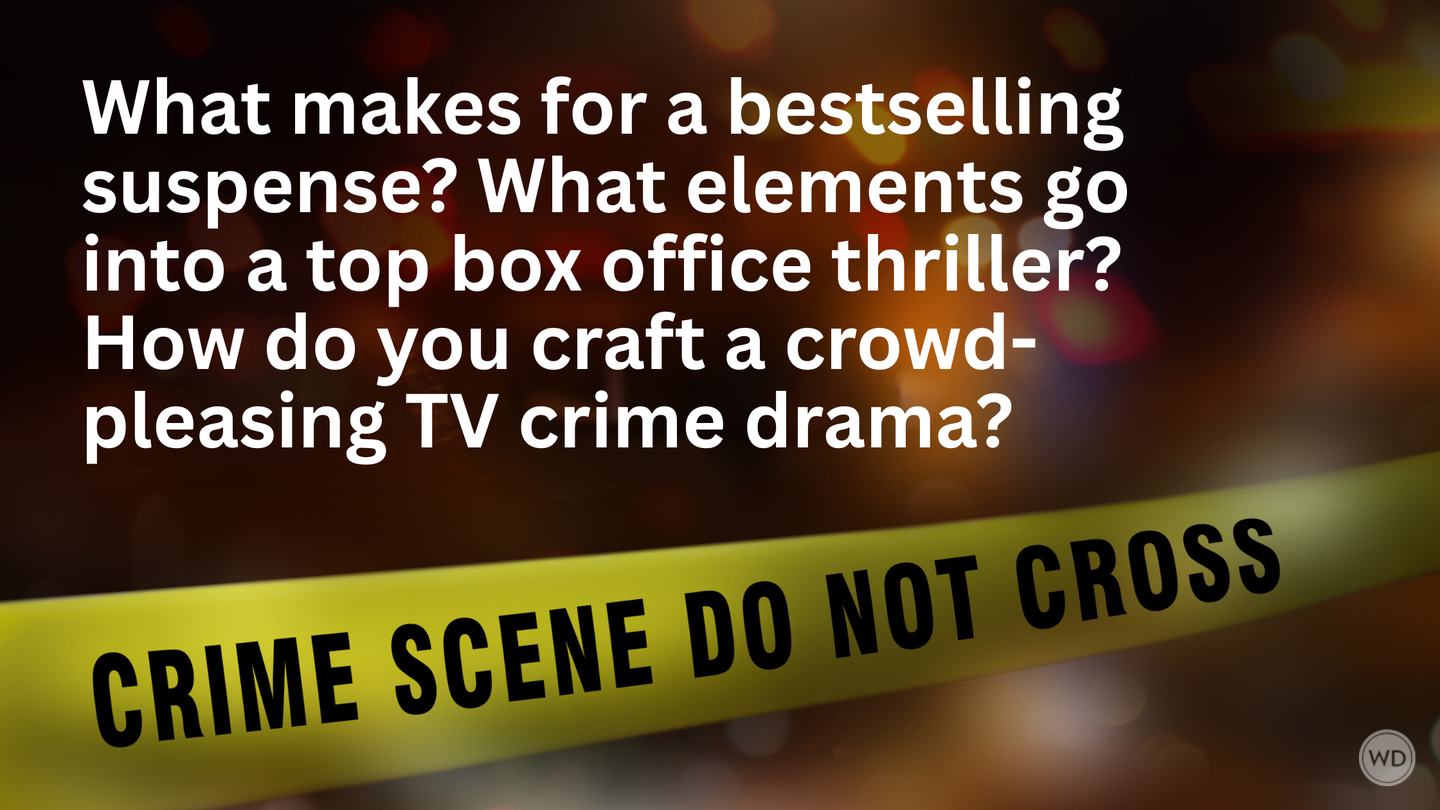12 Things to Consider When Writing Fight Scenes in Fiction (FightWrite™)
Trained fighter and author Carla Hoch shares 12 things all writers should consider when attempting to write effective fight scenes in fiction.
To finish off the year, I thought I would do a year-end review of fight scene tips. You can scan the summaries to see what you missed or what you don’t quite remember and then follow the link. I added an extra, 12, because ending with 11 felt weird—no idea why. It’s a post that I wanted to include in this year’s series but had published the year before. It’s a post that I want to republish a couple times a year because it really helps the visual type folks, which I am. After the fight scene tips, I have a bit of a coach’s pep talk. Give it a gander.
- Fight scenes can offer your story more than action. It can create a backdrop, create a ticking clock and provide a shocking mic-drop moment. A fight scene can provide a complete, sudden, and yet reasonable shift in the storyline and your character. It can also give an opportunity to write an injury which every reader can relate to.
- The site determines the fight. Where a fight takes place has a greater impact on how it turns out than who is fighting. The location of a fight can immediately impart advantage or impose disadvantage. It determines the weaponry, vehicles of war, style of fighting, and render each and every one of those ineffective. The location of a fight can make numbers irrelevant, physical strength inconsequential, and training inapplicable.
- Make the site part of the fight. When considering the location of the fight, consider what is physically located at that site and how it will impact the action. Consider what items at the location could be used as weapons, buffers, bottlenecks and evidence.
- Nothing has a greater impact on a fight than why it is taking place. The why of the fight determines what is at stake. The stakes determine the intensity of the action. The intensity determines the speed and style of combat. And, ironically, why a fight is taking place can turn every one of those on their ear by imparting advantage, imposing disadvantage and making a disparity of size and skill irrelevant.
- Depending upon the setting of your work, it is realistic to assume that someone in your fight scene will have no formal fight training. When that is the case, how they will physically engage will be directly related to the era in which they live, sociological pressure, psychological wiring, and build.
- When deciding on a fighting style for your character, go no further than your manuscript. The era of your work determines if a fighting style exists, the clothing your character wears, and the society in which they live. Where in the world your story takes place determines the culture, terrain, and weather. How your character is built and what they do for a living determines which fighting style is most efficient for them and spares their ability to do their job.
- Resist the urge to write every movement and moment of the fight. Highlight only the major movements. If you aren’t sure which those are, consider what movements would be drawn in a comic book panel. Allow yourself three movements and then back away from the action to give the reader a breather.
- If you are struggling to find your fight writing voice, find an author whose fight scene voice you love and copy it. Try to write your scene as they would. Note their pacing and how often they back away from the action. Pay attention to the sensory details they highlight. Look at the length of their sentences and if their words do double duty in not only expressing what is happening but how it is happening. Copying another’s style will help you develop your own.
- Sensory details bring your reader into the scene on a neurological level. The physical movements within the scene engage a reader’s mirror neurons. These neurons will fire in the same way they would as if the reader were actually doing whatever the character is doing. As the reader’s brain mimics the action, the emotions and sensory experience associated with those actions are conjured. This is why we cringe when we see someone stub their toe. Our experience with that action generates a sensory experience. When your reader has a visceral response to an action, they are directly connecting with the characters involved.
- Your writer might forget what you say, but they won’t forget how you made them feel. This is why the sensory details around a fight can be more important than the techniques employed. Not everyone can relate to being in a fight, but pain is a universal experience. Focusing on the sensory experience also keeps you, the writer, from having to focus on techniques you have no experience with and the reader likely won’t understand or remember.
- If you are struggling to write the fight scene in your rough draft, just put down the basics you want to happen and the story requires then deal with the details in the edits. Don’t let the specifics of the fight scene slow you down. A great idea is the beginning of a story. But only a finished rough draft is the beginning of a book.
- If you are getting lost in the movements of your fight scene, consider mapping the action. Start with the desired injury and go backward toward a movement that would reasonably create it. Even if the injury doesn’t take place, it will determine how the assailant is moving.
IndieBound | Bookshop | Amazon
[WD uses affiliate links.]
Reach Out
If there is ever a fight scene tip that you need, a problem you keep headbutting, please send it my way. My job/dream is to help you with your job/dream. The better able I am to do that, the better off we all are. There is no such thing as a silly question and I say that as a former high school Spanish teacher who was asked how to say “taco” in Spanish. I repeat, one of those precious children literally asked how to say “taco” in Spanish. And when the class laughed, another student said, “I don’t know what y’all are laughing at. She has not taught us how to say ‘taco.’” Bless… I hugged both those students, pobrecitos.
So, when I say that no question is silly, I so mean it. Fighting is a language all its own and if no one has taught you that language, why would you expect to be able to speak it? Consider getting help with your fight scene like getting help translating a foreign language. If you wrote dialogue in a language you don’t speak, you wouldn’t think twice to have a native speaker look at it. “Fighting Words,” is my language. Let me check your translation. And, just as I tell people writing in a language they don’t speak, don’t trust the internet to translate for you. Yes, you may be able to watch videos of people fighting in the manner of your fight scene, but that doesn’t mean your translation of what you see will be correct.
Reach out any time, seriously. You can reach me through the contact form on FightWrite.net. Those messages go to a mailbox all their own so that I don’t miss them. You can also reach me through IG @fightwritecarla. If there is something you would like me to teach at a conference or through Writer’s Digest University, I would love to know that as well. Again, I am here because of you and for you. Avail thyselves!
An official pep talk
I hope December brings you joy and peace. Take a quiet moment to contemplate where you are as a writer, where you wish to go and how far you have come. Yet another way that fighting and writing are similar is that it’s easy to feel as if you aren’t improving. The reason you feel that way is not because it is the truth. You are improving. The thing is, that improvement sinks so deeply into your skillset that you don’t always see it. Writers, just like fighters, constantly raise their own standards. It is easy to miss that our low standard this year was our goal of last year. Likewise, our goal this year will fall below our high standard of next year.
All that said, you will have setbacks, times when you have to hang an “out to lunch” sign on your writing goals. I’ve had a gracious plenty setbacks this year in both writing and fighting. Just remember that where you are isn’t who you are. I recently lost in a Pan American competition. As the reigning world champion of my division, I was seeded to win. Unfortunately, I was sick, very dehydrated and ended up just lying on the jiujitsu mat like a beached manatee. Needless to say, it was a suckfest. And, as a special bonus, the fight was broadcast live. Glory.
That loss makes me no less a fighter. In the same vein, a poor day of writing, a rejection, a cruel critique or a review from someone who sprinkles schadenfreude on their ice cream, makes us no less writers. On the contrary, if we are able to push through those days, we will surface the water stronger than before because there is no strength without struggle. Yes, I know that sounds super corny but it’s gospel. Also, sometimes, you just might need to take a break from writing. Stress is corrosive to creativity, and taking a step back isn’t the same thing as quitting. It’s OK to take a break, you have my permission.
What you don’t have my permission to do is define yourself by those moments. Those moments are where you are not who you are. You are a writer even in the seasons when you can’t write. Writer is not a title bestowed by a publisher or agent. It does not require a proof of income. Writing is your wiring. It is how you process the world. And, it’s why you read these posts, which I’m grateful for. Really. I am thankful for you readers/writers. If you weren’t there, I wouldn’t be here.
Until the next round with FightWrite® on the WD Blog, get blood on your pages. See you next year!
Carla Hoch is the award-winning blogger of FightWrite® and author of the Writer’s Digest book Fight Write: How to Write Believable Fight Scenes. She is a WDU instructor who regularly teaches on the craft of writing fight scenes, action, and violence as well as the mechanics of fighting for writers. Carla is a world champion jiujitsu player and has experience in almost a dozen fighting styles. She lives and trains outside Houston, Texas.






